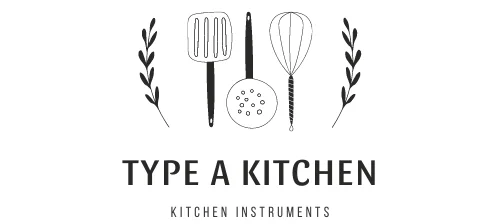Introduction:
Are you tired of rummaging through your kitchen cabinets, searching for matching lids and containers every time you need to store leftovers or pack a lunch? Glass food storage containers can be a fantastic addition to any organized kitchen, but without proper organization, they can quickly become a chaotic jumble.
By using practical tips and strategies, you can effectively organize your glass food storage containers. From maximizing space utilization to implementing labeling systems, we will help you transform your cluttered collection into an orderly and hassle-free storage solution.
Say goodbye to the frustration of mismatched containers and hello to an effortlessly organized kitchen!
Overview of How to organize glass food storage containers
Are you tired of opening your kitchen cabinets only to be greeted by a chaotic mess of glass food storage containers?
If so, it’s time to regain control and bring some order to the chaos. In this article, we will provide you with an overview of how to organize your glass food storage containers effectively.
Start by decluttering your collection. Get rid of any broken or chipped containers, lids with missing mates, or those that you rarely use. Next, sort the remaining containers by size and shape. This will make it easier to stack them neatly in your cabinets.
To maximize space utilization, consider investing in a set of matching glass containers with nesting capabilities. These sets usually come in various sizes that can be stacked together when not in use.
10 ways How to organize glass food storage containers
1. Sort by Size:
Sorting them by size will make it easy to stack them neatly in your cabinets. You can even store them on top of one another, as long as they have a matching lid. Stack the containers on top of one another,, with the largest containers at the bottom and the smallest at the top.
Stacking them neatly will also depend on their shape. Sorting them by shape will make it easier to stack them in your cabinet for example Stack square containers next to each other and round ones next to each other.
2. Utilize Adjustable Dividers:
Adjustable dividers can help you fit more containers in a cabinet. You could even stack them on top of one another without worrying about the lids getting lost in the process. You can use adjustable dividers to store containers of different sizes in one box.
For example, you can stack two square containers and one round container with a divider that fits perfectly between them.
3. Nest Containers:
You can stack containers on top of one another with the help of adjustable dividers. For example, you can place two square containers and one round container together using a divider that fits exactly between the two square containers. You will have more storage space this way.
Nesting containers can help you save space and prevent the lids from getting lost. You could stack them in a cabinet or store them on top of one another. For example, you could put the lids of all your square containers inside one large round container to save space.
4. Use Drawer Organizers:
You can also organize your pots and pans in drawers. To make them easy to access, you should label the drawer with a sticker or marker with the items that are inside it. You could also stack your pots and pans in transparent containers inside the drawer for a more organized look.
You can turn your drawers into storage spaces with the help of drawer organizers. You can buy them in a variety of sizes and customize them according to your needs. You could also stack different-sized containers on top of one another and put the smaller ones inside the bigger ones to save space.
5. Stack Lids Vertically:
If you have a lot of lids for the pots and pans, then you can easily stack them vertically on top of one another. If there are some that do not fit, you could just place them on the side or make a separate pile for them.
When you stack your lids vertically, it makes them easy to find. You can label the containers or bins that you use for your lids with a marker and then arrange them according to their type. This will make it easy for you to know where to look for them. It will also give your kitchen an organized look.
6. Utilize Shelf Risers:
If you have a lot of pots and pans, it can be a bit hard to store them. You should install shelf risers to make the most of your storage space. This will allow you to stack your pots and pans vertically without making them take up too much room. You can also use the same shelf risers that you use for pots and pans to store your baking pans.
7. Label Containers:
If you are using containers to store your kitchen utensils, make sure that they are labeled. This will make it easy for you to find what you need and keep it organized. If you have a lot of containers, you can use the label maker to make it easy for you to find what you need. If you do not have a label maker, you can simply use masking tape and write on the container what is in it.
8. Store Glass Containers Separate from Lids:
When you store your glass containers, make sure that you do not stack them on top of each other. This will keep the containers from breaking while they are in storage. You can place a cardboard box directly on the bottom of your container cabinet so that you can easily see what is inside of it.
This will also keep them from tipping over. If you are using glass containers to store leftovers, do not fill them too full. Once food is heated in a microwave, it expands and can cause the glass container to crack.
9. Store Flat or Lying Down:
You can store glass containers on their sides if you have space. Storing them flat or lying down will keep the lids from becoming bent in the back of your cabinet. If you are storing them upright, make sure that they are not stacked on top of each other.
You can store your containers on their sides, as long as you place them flat or lying down. If they are put on a shelf, the weight of the glass can cause them to tip over and break.
10. Regularly Assess and Declutter:
Having an organized pantry is important to help with food safety. If you are storing your glass containers on the shelf, make sure that they are not stacked on top of each other or close together. Even if you are storing your glass containers properly, over time, they can become cluttered.
As you use these containers to store food or other items, try to streamline your storage by regularly decluttering and donating unused containers that you no longer use.
Conclusion:
Organizing glass food storage containers can be a simple and efficient process with the right strategies in place. By first decluttering and assessing your collection, you can determine which containers are worth keeping and which ones can be discarded.
Next, grouping similar sizes together and using dividers or bins will help maximize space and keep everything easily accessible. Labeling containers and shelves will further streamline the organization system and make it easier to find specific items when needed.
Finally, regularly maintaining and reevaluating your system will ensure that it continues to work effectively over time. With these steps in mind, you can create a well-organized and functional glass food storage container collection that will simplify your meal prep routine and reduce kitchen chaos.


